Tired of Mario Kart 8 Deluxe and want something more challenging, slippery, and complex, ATV Drift & Tricks is out now on Nintendo Switch and can provide all those things. This particular racer is, as indicated in the title, an ATV racing game with both single-player races and multiplayer ones, including a campaign that can unlock more racers and tracks.
However, that challenge also means there's a bit of a curve to learning how to play ATV Drift & Tricks. Here's a quick guide to help you get started with this racer.
See at Amazon
When you first start playing ATV Drift & Tricks, you may find it difficult to adjust to the driving controls. ATVs on dirt roads are extremely slidey, meaning you'll have difficulty steering around turns, recovering from mistakes, and staying at top speed. While challenging, all this really means is that you need to occasionally lift your fingers off ZR and monitor your speed carefully as you drive.
Spend your first few races getting used to the feel of the vehicle on the track. Avoid top speed and take corners slowly. Practice jumps and use the control stick to move forward and backward to adjust your angle as you land so that you don't flip or crash. Get used to the different tracks, and learn which places are okay to go off-road to take shortcuts, and which aren't worth the lost points.
It's okay to take your time just getting the feeling down before you get seriously competitive.
Drifting is one of the most essential components to winning races in ATV Drift & Tricks. It's in the name, after all!
To drift, you'll need to lightly tap ZL as you're steering around a turn. You don't want to hold the button, as holding it will cause you to brake. But a tap while turning will send you into a drift and allow you to better navigate the tight turns of races.
You'll want to start to drift right as you enter into a turn, but just as with the normal game controls, it'll take some practice to fully get the instinct for when you should start turning to succeed in a drift. It can also vary from racer to racer. Practice turns and drifts with your favorite racers until you can master them, and you won't have to lose nearly as much speed to get around the track and win.
One of the other vital components to winning races in ATV Drift & Tricks is the Wheelie trick. Wheelies can be performed by pressing and holding B. If done and timed correctly, you'll get a speed boost, but it requires a degree of precision.
Wheelies can give boosts when done at two times: while starting from a stand-still, and when landing after a jump. You'll see a bar appear below your driver with two moving arrows. In order to land the wheelie, you want to press and hold B when the arrows are within the center marker. If you miss wildly, you'll see the markers turn red and you'll actually lose speed. If you're close, you'll see them turn yellow and get a small boost. But if you're dead on, the arrows will turn green and you'll get a larger speed boost.
If you're close, you'll see them turn yellow and get a small boost. But if you're dead on, the arrows will turn green and you'll get a larger speed boost.
If you get red, you'll want to let go of B right away to try and rebuild your speed. If you get yellow or red, keep holding B until the indicator below your driver expires to get the full benefit of the speed boost.
This technique can also be used at the very start of the race for an initial boost, or any time you fall and need to restart.

Still struggling to win your races in ATV Drift & Tricks? Ask your questions in the comments!
Get More Switch
Nintendo Switch
Last updated on January 4th, 2021 at 11:11 am
MX vs ATV Alive was originally released in 2011, but has just had a new lease of life after being available as a free game for Xbox Live Gold Subscribers on the Xbox 360. But as a digital download, you might be struggling to pull off some of the tricks without the manual. So here’s how to perform stunts in MX vs ATV Alive
How to perform stunts in MX vs ATV AliveMX vs ATV Alive Controls:With the default controller layout (Xbox 360):
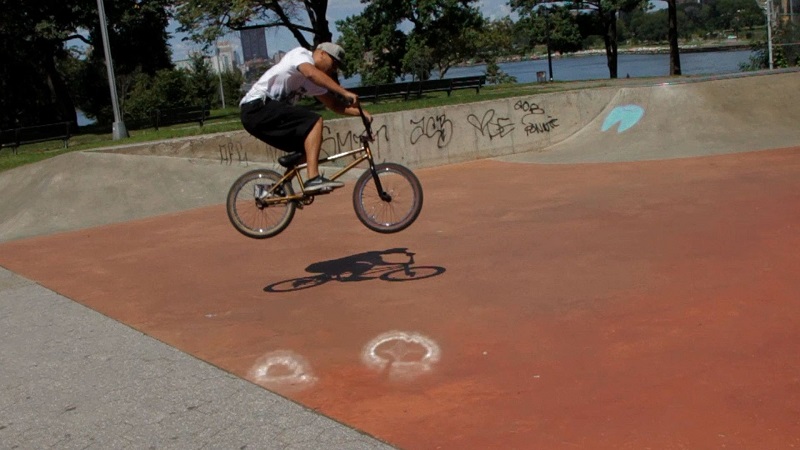
Move your rider left and right to make sharper turns and balance the motorcycle or ATV.
Move your rider forwards and backwards to keep your rear wheel planted and your vehicle balanced over whoops and small jumps.
Move your rider back and feed in the throttle to perform wheelies, and lean forwards with the brake on to perform stoppies.
Seat Bounce allows you to jump further. Whether you’re able to perform a seat bounce, the shock absorber on your HUD will turn yellow – and you should pull back on the right stick. If you’re successful, the shock will turn orange. And to get a maximum bounce, press the right stick while pulling back, and if you get it right, the shock will turn green.
Use the Seat Bounce appropriately – you want to be landing on the flat or the downside of jumps, and staying lower to the ground is faster as you’ll get your wheels on the ground more quickly and therefore be able to drive forwards.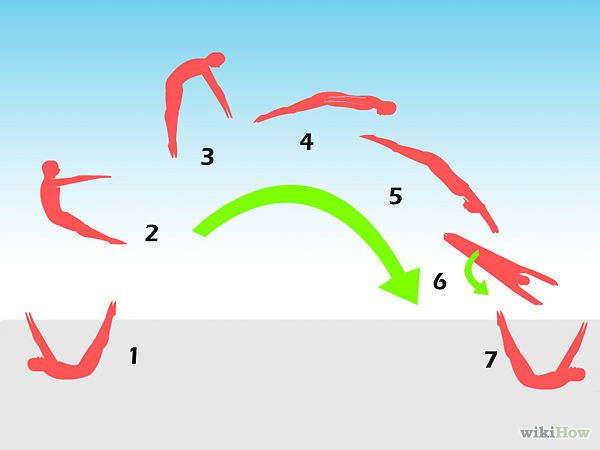
Clutch: To get our of corners and landings from jump quicker you should hold LB to build up the revs. The further the metre is filled up, the longer your engine will put out peak power when the clutch is released. So pull in the clutch with LB when you’re in the air and release when you’re landing to power out of a jump for example, or when you’re not using the throttle to get around a corner.
Backflip: Just before you take off, hold RB and move the right stick down. Hold the right stick down until you complete your backflip – rider position, throttle and braking will control how fast you flip.
360: Before you take off, hold RB and then move the right stick either left or right, and then quickly down to start the rotation.
Whips: When airborne, move the right or left stick to the left or right to perform a whip.
Scrubs: To stay as low to the ground as possible on a jump, move the right stick hard left or right before you take off, and you can also add the left stick.

Top Tips:

See all of our MX vs ATV Alive coverage and news, here. You can still find MX vs ATV Alive for sale via the Xbox Marketplace, or find physical copies on Amazon.
ATV riding techniques could be the subject of a full book. In the same article, we want to reveal to you the basics of safe riding. At first glance, there is nothing complicated in driving ATVs - you just need to steer and enjoy riding.
When driving over bumps, for example, those of the "wave" type, the driver must change his position all the time. So, when approaching an obstacle, you must shift your body back, otherwise you can hit the obstacle with your wheels. When driving over a bump, you need to move the body back forward, thus preventing excessive separation of the front wheels, i. e. rearing up the ATV. Then, when the rear wheels come off the ground, you need to move back again, otherwise you can fall out of the saddle, hitting your knees on the steering wheel.
e. rearing up the ATV. Then, when the rear wheels come off the ground, you need to move back again, otherwise you can fall out of the saddle, hitting your knees on the steering wheel.
Moving in a straight line at low speeds (up to 40 km/h), you can afford to relax. But at higher speeds or when passing sharp turns and slopes, the driver must move very actively. Indeed, due to the high center of gravity, short wheelbase and small width, ATVs are very prone to rollovers. In addition, if the motorcycle flies separately from the motorcyclist during falls, then the ATV most often covers the driver. Therefore, in order for ATV riding not to end with serious injuries, it is necessary to study the driving rules and strictly follow them.
Indeed, due to the high center of gravity, short wheelbase and small width, ATVs are very prone to rollovers. In addition, if the motorcycle flies separately from the motorcyclist during falls, then the ATV most often covers the driver. Therefore, in order for ATV riding not to end with serious injuries, it is necessary to study the driving rules and strictly follow them.
ATV rider's weight is an important factor that affects machine handling. By shifting their weight, the driver can unload or load the front or rear of the ATV, thus compensating for centrifugal forces.
The first rule you need to learn is that when riding an ATV, you need to relax your arms. When driving, the driver can always let go of his hands, because his legs are holding him in the saddle. As the speed increases, the load on the legs also increases.
Conventionally, three racks are distinguished. The middle stance is used when driving in a straight line without turning. When opening the gas, the body must be moved forward to unload the hands. Thus, the front strut is obtained. When braking and closing the gas, the body, on the contrary, must be moved back, i.e. take a back seat. By the way, the word "stand" comes from the word "stand", and this name is not accidental. When actively riding an ATV, you do not have to sit. Standing on an ATV lowers your center of gravity. After all, there is a huge difference between the weight on a high saddle and the weight on the footrests. And the effect of moving the body in a standing position is much greater than from fidgeting back and forth on the saddle.
When opening the gas, the body must be moved forward to unload the hands. Thus, the front strut is obtained. When braking and closing the gas, the body, on the contrary, must be moved back, i.e. take a back seat. By the way, the word "stand" comes from the word "stand", and this name is not accidental. When actively riding an ATV, you do not have to sit. Standing on an ATV lowers your center of gravity. After all, there is a huge difference between the weight on a high saddle and the weight on the footrests. And the effect of moving the body in a standing position is much greater than from fidgeting back and forth on the saddle.
When going through a turn on a motorcycle, it is tilted inward, thus struggling with centrifugal force. But you can't do that with a quad bike. Therefore, it is necessary to use the weight of the driver. The main rule here is to always transfer the weight inside the turn. Moreover, it is necessary not only to tilt your shoulders. It is necessary to hang the entire body, including the fifth point. Only the shin and knee hold on to the saddle. Of course, if you turn at minimum speed, then you can limit yourself to turning the steering wheel.
It is necessary to hang the entire body, including the fifth point. Only the shin and knee hold on to the saddle. Of course, if you turn at minimum speed, then you can limit yourself to turning the steering wheel.
The correct stance is characterized by slightly bent knees, elbows set apart, and a slightly arched and relaxed back. Why not stand on straight legs or keep your back straight and tense? Because bent knees allow you to absorb shock coming from uneven terrain. By the way, the force of these blows is sometimes quite enough to knock the driver out of the saddle. A straight tense back under such conditions can lead to injury to the intervertebral discs and even a compression fracture of the spine. Yes, and the internal organs with the wrong fit will have a hard time.
Active ATV riding requires good physical shape. So, in quad schools, the duration of the lesson does not exceed an hour, and at the end of the lesson, students can literally be squeezed out. And riding an ATV off-road is also an activity worthy of training in the gym.
And riding an ATV off-road is also an activity worthy of training in the gym.
When riding non-sport ATVs, it is best to avoid jumping. Firstly, this way you can break the ATV. Secondly, in order to safely perform such tricks, the ATV motor must have high-torque and fast response to the throttle. If, nevertheless, the jump could not be avoided, then it is necessary to land in the middle stance, but be ready to move to the back. When the wheels touch the ground, you need to slightly open the gas. It is better not to use four-wheel drive when jumping.
Every time you ride an ATV, you need to practice looking into the distance. This is necessary to develop the habit of evaluating the trajectory of movement in advance. Beginners often do not have time to track the road, and at some point they are not ready to perform adequate actions. And another, very predictable obstacle, can become a problem for them.
| When moving along a slope, it is necessary to move the body in the direction opposite to the slope.
|
Before you start climbing, you need to pick up speed. Then the resulting inertia will allow you to smoothly drive into the steepness. If you suddenly open the gas directly on the rise, the ATV may tip over. Climbing should be in the most forward stance and on medium gas. If the incline is too steep, the ATV may roll backward when the throttle is released. In this case, you should not brake with the front axle, not the rear. If the ATV starts to roll over, you can try to jump to the side, but this acrobatic stunt is unlikely to be successful.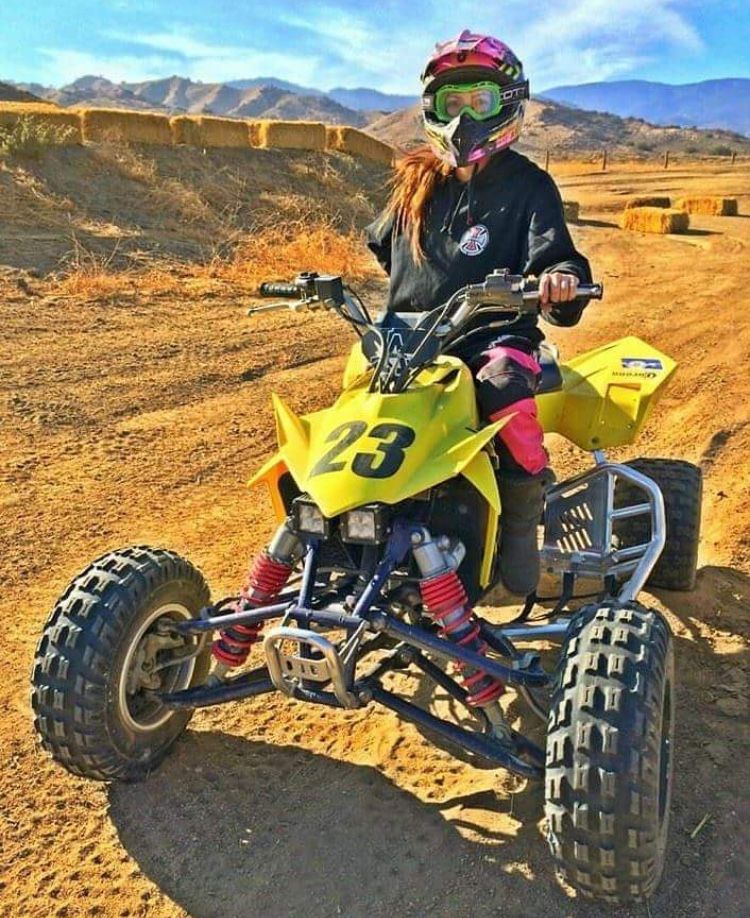
If the driver moves his torso out of the turn, then his centrifugal forces will pull him to the outer radius, and in order to stay in the saddle, he will need to firmly grip the steering wheel. At the same time, the ATV will definitely try to roll over. To avoid such an unpleasant situation, it is always necessary to remember a simple rule - to shift the body only in the direction of rotation. Those. if we turn to the left, then we shift the body to the left side, and vice versa.
Descents must be made in the C-pillar. In this case, the arms must be extended and slightly bent at the elbows. There is no emphasis on the hands, you can even let them go, holding on with your feet. The steeper the descent, the more the driver must move the body back. The lower photos show the consequences of a descent in an incorrect landing. The main mistakes - the driver shifted the weight forward and pressed his hands to the body.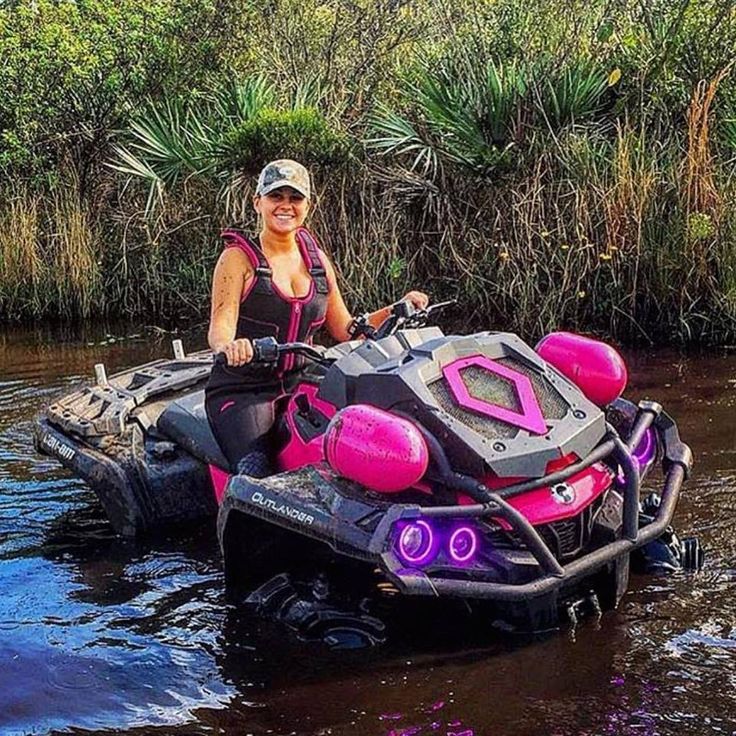
A trick is a technical trick or spectacular maneuver, usually impossible for an unprepared person.
Motorcycle stunts have become the basis for some sports today. The main directions of modern motorcycle stunts are stunt riding and motofreestyle.
Stunt riding is a sport based on a specific set of tricks performed on different types of motorcycles. Stunt riding (from the English “stunt riding”) has become widespread not only in the sports environment, but also among non-professionals. The movement originated in the 1980s in the UK. The development of sports provoked the emergence of national, continental competitions and the world championship.
Wheelie is wheelie. The trick is considered one of the basic, simplest elements of stunt riding. Ways to perform wheelie can differ in terms of movement (eg, starting from a place or on the move), the position of the biker (in the saddle, with the legs removed from the footboards, standing, standing on one leg, sitting on the tank, etc. ). The basic level is a straight-line movement on the rear wheel with a stable speed in a sitting or standing position. Advanced level - riding on the rear wheel along complex trajectories with a change in body position.
). The basic level is a straight-line movement on the rear wheel with a stable speed in a sitting or standing position. Advanced level - riding on the rear wheel along complex trajectories with a change in body position.
Stoppy - driving on the front wheel while braking. "Normal stoppie" is a quick deceleration during a straight line with the rear wheel in the air.

Burnout (burnout) - "burning rubber", is achieved by prolonged slippage of the rear wheel. The trick is performed in a stationary position of the motorcycle or in motion. The first of the methods does not require any abilities. To let in smoke, you need to unscrew the throttle while simultaneously depressing the front brake and sharply release the clutch lever.
There are several ways to perform a burnout: sitting astride the bike, laying it on its side, standing to the side or in front of the bike. Burning rubber in motion is a more difficult trick that requires some skill from the rider. An even more difficult way to perform the trick is to throw the wheel into spin when the motorcycle is moving. You can burn rubber with the rotation of the bike in a circle of small radius.
Motofreestyle is a sport based on acrobatic elements with a motorcycle performed while jumping from special jumps. Unlike stunt riding, freestyle motocross uses only motocross bikes.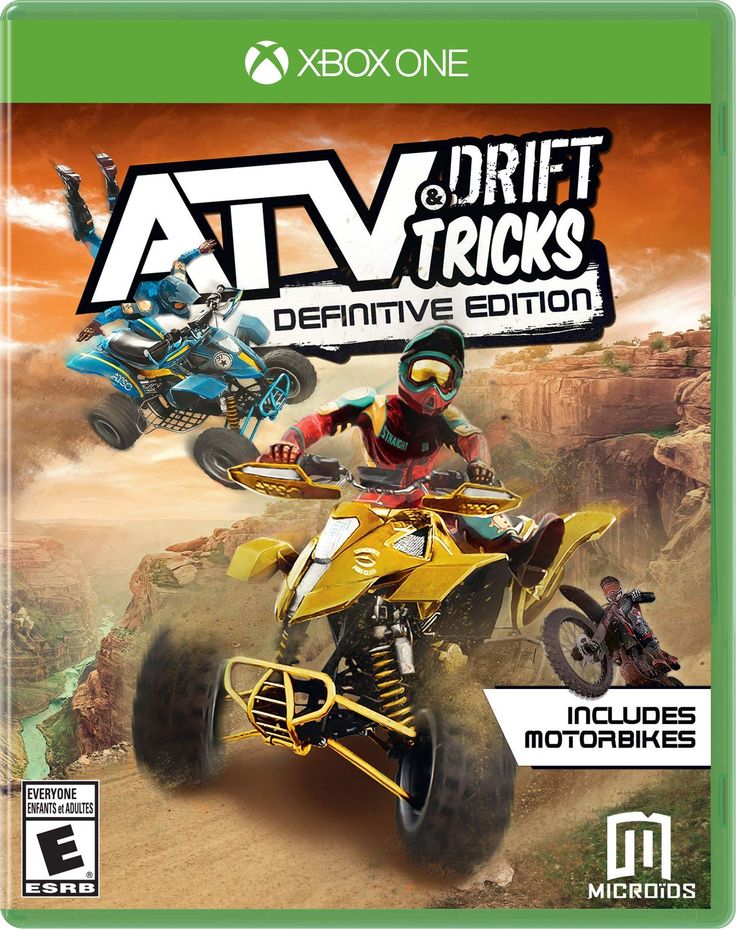
Whip is a jump in which the rider tries to place the motorcycle as level as possible and then returns to the vertical position for landing.
Backflip is one of the foundations of all moto freestyle.
Double backflip - double tacky back, long considered impossible, demonstrated in 2006 by Travis Pastrana and later by some other riders.
Frontflip is one of the most difficult elements of modern motofreestyle.
360 Degrees - A trick that requires the motorcycle to turn 360 degrees in the air.
Body Varial - a trick in which the rider turns 360 degrees above the motorcycle while the motorcycle flies in a normal path.
Cliff Hanger - requires the athlete to hook their feet on the handlebars, stretching their body and arms up.
Hart Attack - standing upside down on a motorcycle, while jumping, the rider holds the handlebars with one hand, and leans on the seat with the other.
Dead Body - to perform the trick, you need to stretch your body with your legs together in front of the motorcycle, holding the handlebars with your hands.
Motorcycles from the movie "Three meters above the sky"
“Three meters above the sky” is a movie that really wanted to become for today's youth what the film “Careless ... 9” was for teenagers of the sixties.0171
Children's motorcycles
A children's motorcycle is a motorcycle whose dimensions, power and other characteristics provide optimal conditions for teaching a child to drive. ...
Futuristic motorcycles from the movie "Tron"
The American film Tron: Legacy was released in wide release on December 17, 2010. The picture was remembered for its stunning special effects for that time: comp.